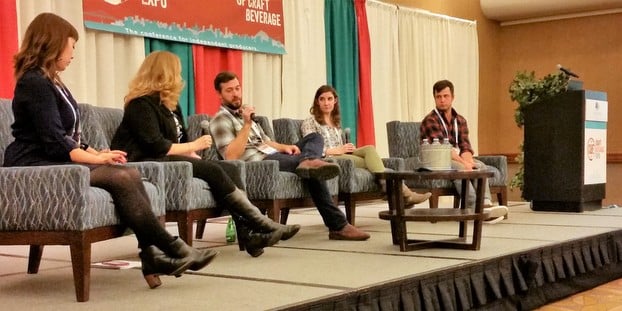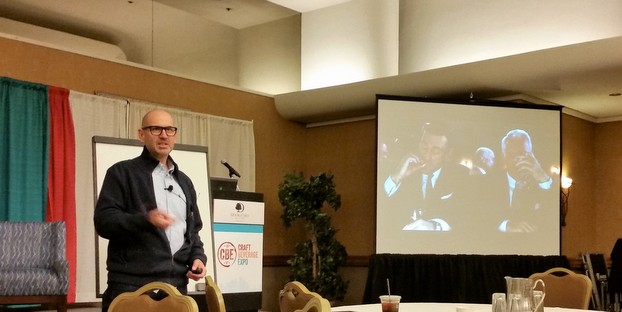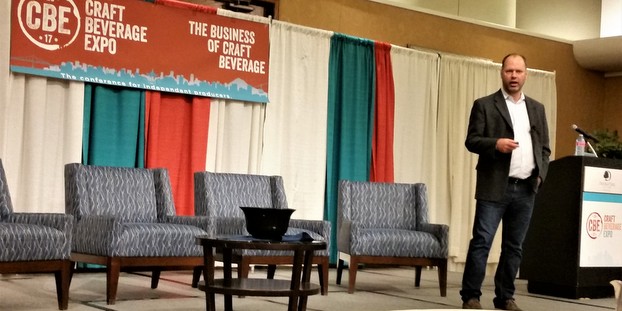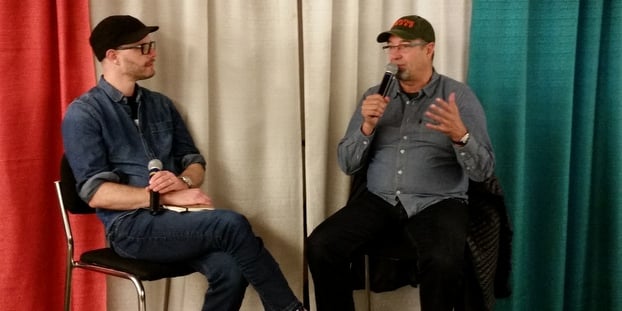
If content is king, then local is its queen. At least in the craft beverage sector, winning in your local market seems to be the key to longevity and success. Presenters at several sessions at Craft Beverage Expo 2017 directly addressed their remarks to the topic of how to claim ground in the local community within 10 miles of your craft business.
Events, events, events
Of course, if you sell craft beer, then the single biggest way you can sell more is to get people to taste your beer, so most brewers know they need to host events. Dave Perks of Perks Agency relies heavily on events for his small craft beverage clients, and he offered several tips for designing events.
First, aim for two to four big events per year. You should host the events yourself, though they don’t need to be at your business location — and festivals don’t count. The events do not actually have to be beer-centric so much as fun because the experience itself becomes marketing for your brand.
Second, think strategically about promoting your event. Of course you want to use e-mail and social media, as well as posters in your tap room or restaurant and word-of-mouth promotion by your staff. However, he advised considering SMS messaging and local radio. In particular, radio still reaches over 90 percent of millennials, Hispanics and African-Americans on a weekly basis.
Third, think of any event as part of a “three visit strategy.” Customers who visit your business or consume your products three times are over 70 percent more likely to continue to patronize you than someone who tries you once or twice. He works with his clients to develop coupon and merchandise incentives that keep drawing people back.
Perks focused on events is one of three primary local strategies. Another was to claim your business on Google, Yelp, and TripAdvisor and to fill out your profiles there. He reported great success with Yelp check-in deals, and your customer reviews can teach you a lot about what people do and do not like about you.
A third strategy is to get involved with the local community so your brand is visibly associated with causes people care about.
Karen Barnes of Wine Direct Marketing Services listed events as an essential component of any loyalty club. In the case of loyalty club events, she advises charging a fee to amplify the perceived value and always permitting guests — who, of course, can become new club members.
Location, location, location
Okay, we say that about housing, but it’s pretty true in travel, too, and a panel on destination marketing organizations (DMOs) shared why your local and state DMOs should be part of your public relations strategy.
DMOs are often called other things — like Travel Oregon or the Chamber of Commerce — but they share in common a mandate to promote local businesses and a desire to know what you have to offer.
Michelle McKenzie of Travel Portland pointed to evidence that people will plan their vacation and travel around events such as beer festivals or loyalty club parties, so it’s important to let your local DMO know the dates of events as early as possible. Andrew Grossman of Travel Oregon also urged the audience to see their DMO as a resource. Some DMOs will post a business page on their sites, some will work with you to develop educational tools and many offer grants for special projects.
Make social local
A panel on influencer marketing described creative ways to use social media influencers to extend the local into the digi-sphere (or whatever we’re calling it). Stephanie Peachey, VP of direct to consumer for Vintage Wine Estates, described how her team created a winery experience for influencers that helped rebrand the company.
Viansa Sonoma wanted to revamp its image, so they made some renovations, then invited some eight social media influencers in their target demographic to spend the day at the winery. They created a series of events on-site, with plenty of time for selfies, of course, and coached the influencers on how to tag their photos.
The result was a very rapid reorientation of the brand. Granted, this was part of a larger strategy. In fact, their relationship with the influencers extended beyond the one day. They invited some of the influencers back to serve as models for a photo shoot, and they offered them products for review.
“The key with influencers is to engage with them. Market directly to them and with them,” Peachey said.
Alan Kropf, director of education at Anchor Distilling, travels with a portable video podcast setup and seeks out opportunities to engage in meaningful conversations with other makers, leaders or influencers related to his industry. One could easily adapt this to an audio podcast run from home. In either case, it allows you to connect your brand to a larger conversation and thus a larger movement, and where there’s movement there’s energy.
Rebecca Stamey-White, a law partner at Hinman & Carmichael LLP, cautioned that you need to investigate the legal issues concerning social media advertising. For instance, retweeting or reposting is considered adopting content as your own, so be sure content conforms to TTB advertising guidelines. Similarly, influencers should be coached to include a hashtag such as #paidad, #sponsored or #gotfreeproduct when posting in partnership with you.
The rules can sometimes be complicated, especially when it comes to retailers and advertising your brand. Stamey-White advised relaying all questions for your state alcohol beverage control board (ABC) through your lawyer. Rather than expose your business to unwanted scrutiny by calling your ABC directly, your lawyer can call confidentially and find answers to your questions.
The common thread of these panels and presentations was that your small business doesn’t need a huge budget to get noticed so much as you need to make connections with other people who embrace your same values. Some creativity in seeking out connections and some passion in working together can go a long way toward attracting your tribe to you.
Brad Fruhauff is a good dude, a great beer writer and a contributor to Craft Brewing Business. Plus, he wants to write for your brewery. Check out his other work here.





[…] get a fuller sense of what each of those means, read my full coverage at CraftBrewingBusiness.com. To start strategizing ways to engage customers within 10 miles of your brewery, contact […]